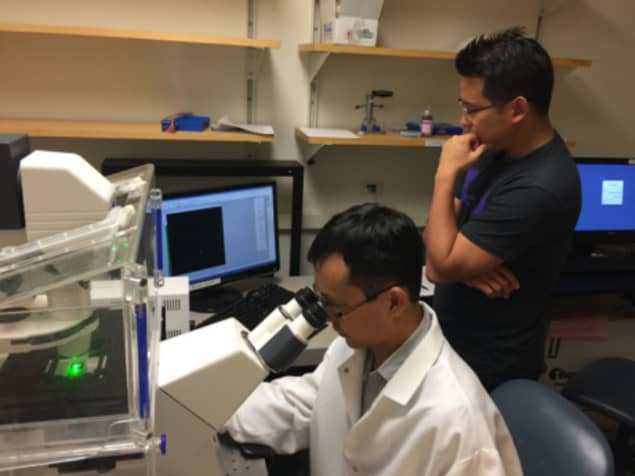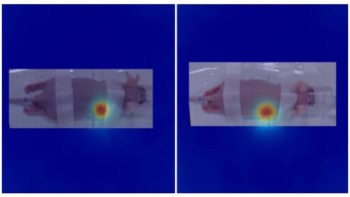
Nanoparticle drug delivery systems that can penetrate multiple biological barriers have great clinical and therapeutic potential.
Now, a team of researchers from the US and China has designed a new drug delivery system that exploits self-assembled nanocages made from ferritin (FTn), a naturally occurring protein that is used in humans to transport iron (PNAS 114 32 E6595-E6602). In this case, the FTn nanoparticles differ in structure from the natural protein and are engineered to have a hollow interior that can be loaded with, for example, a high concentration of cancer drugs.
The research team, led by Justin Hanes and Jung Soo Suk from Johns Hopkins University in Baltimore, were interested in controlling the delivery of cancer drugs to lung airways. Such targeted drug delivery minimizes unwanted side effects while enhancing therapeutic outcomes, potentially yielding a more localized treatment for lung airway cancers.
Breaking through the barriers
To reach tumour tissue in the lung airways, the FTn nanocages must be able to penetrate the dense and highly adhesive protective mucus gel layer covering the airway epithelium. The researchers devised a way to coat the FTn nanoparticles with a dense layer of non-adhesive polyethylene glycol (PEG) polymers, using a unique strategy of fine-tuning the location and surface density of PEG. In tests, the lung airways of mice that had inhaled the PEGylated FTn showed uniform distribution of the nanoparticles, while the uncoated particles were found to aggregate in the mucus gel layer.
FTn is a very attractive candidate for a cancer drug delivery platform, since transferrin receptor 1 (TfR 1) is highly expressed on tumours and has an intrinsic affinity for ferritin. Looking at in vivo and in vitro cancer tumour tissues that perform TfR 1-dependent ferritin uptake, the authors investigated the effect of varying the molecular weight of the PEG. They found that FTn coated with PEG of low molecular weight offered the optimal formulation for penetrating both the airway mucus and tumour tissue barriers. Importantly, coating the nanoparticles with low molecular-weight PEG did not interfere with the intrinsic tumour-targeting capability of FTn.
Targeted drug delivery
The researchers also tested whether the coated nanocages could effectively deliver doxorubicin (DOX), a chemotherapy drug that is often used to treat airway-related lung cancers, to dense tumour tissues. They chemically conjugated DOX to PEGylated FTn via an acid-sensitive linker, which should cause the DOX to be preferentially released in intracellular acidic vesicles once the FTn nanoparticles had been taken up by the tumour cells.
The results confirmed that the tumour-penetrating property of PEGylated FTn markedly improves the distribution of DOX within dense tumour tissue. When studying survival rates in an aggressive mouse lung cancer model, mice that had inhaled DOX conjugated to PEGylated FTn achieved a 60% survival rate at day 60. This represents a huge improvement compared to the median survival of 18 days in untreated mice and for mice treated with DOX in solution. The findings of the study are an important proof-of-principle for a new nanoparticle drug-delivery system that could one day find its way into the clinic.



